Before the US and its allies gifted a massive weapons arsenal to the Taliban, Afghanistan was a graveyard for another superpower – the former Soviet Union
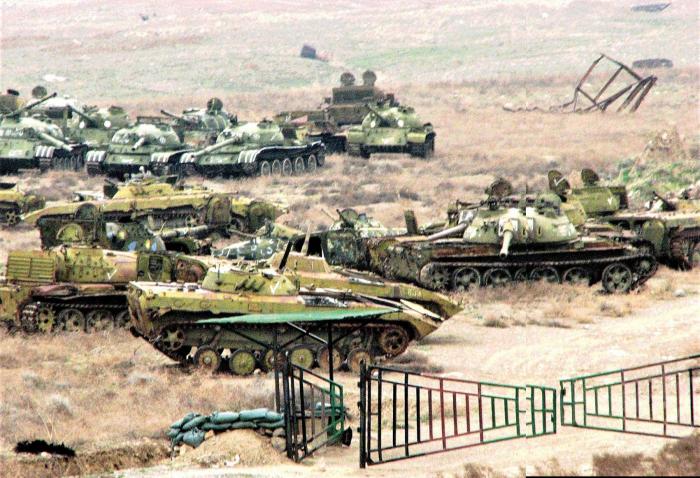

The Soviet-Afghan war had its origins in a 1978 coup carried out by the Afghanistan communist party. The communist party was, however, deeply divided by internal factions, which played out the following year when rival, and Afghan minister of foreign affairs, Hafizullah Amin, ordered the assassination of the Afghan president, Taraki Nur Mohamed. Mohamed was a founder member of the People's Democratic Party of Afghanistan (PDPA) that had seized power a year earlier.
The Soviet Union had warned Taraki that the radical social reforms he was implementing were undermining his popularity and his grip on power became increasingly perilous.
Wanting a stable communist neighbour, the Soviet Union deployed two divisions to the Afghan border while 500 military and civilian advisorswere sent to assist the Kabul administration and arms were supplied at discounted prices.
While Amin did assume power following Taraki’s assassination, Moscow labelled him “a powerhungry leader who is distinguished by brutality and treachery”. Soviet leader Leonid Brezhnev and the Politburo, driven by growing concerns that they were going to lose control over a region of strategic interest, decided to act.
Following a phased, relatively limited deployment of troops and assets over several weeks, Soviet airborne forces attacked the Presidential Palace in Kabul on December 27, 1979, killing Amin. The Soviets replaced him with Karmal Babrak and over the next two days the Soviet 40th Army, commanded by Lt Gen Yuri Tukharinov, continued with its invasion of Afghanistan.
‘There was mounting criticism of the Afghan war in the Soviet media’
The force comprised three motor rifle divisions (MRD) and the 103rd Airborne Division. The 5th Guards MRD, headquartered in the west Afghan town of Shindand, included the 12th, 101st, 371st motor rifle regiments and the 24th Tank Regiment. The 108th MRD, with its headquarters in Khair Khana, a neighbourhood of Kabul, and Bagram, included the 177th, 180th and 181st motor rifle regiments and the 285th Tank Regiment. The 201st MRD, deployed to Kunduz Province in north-eastern Afghanistan, included the 122nd, 149th Guards and 395th motor rifle regiments and the 234th Tank Regiment.
The counter-revolutionary mujahideen, aided by Pakistan, Iran, and the US, continued to increase its armed activities against the Soviet Union and, in fact, anyone or anything that represented a threat to their centuries-old socio-political existence centred on family, tribe, and religion.
Although largely untrained, the hardy mujahideen were thoroughly accustomed to the use of weapons in a part of the world where conflict resolution through the barrel of a gun was endemically ingrained in their lives.
Their weapons were compatible with the mobile tactics of guerrilla warfare and included the ubiquitous AK-47 assault rifle, PK light machine guns and the RPG-7 anti-tank rocket grenade launcher.
The employment of 60mm, 82mm, and sometimes 107mm mortars, 82mm recoilless anti-tank guns, BM-1 single 107mm rocket launchers, and 7.62mm and 12.7mm heavy machine guns became more widespread. These tribal fighters were also enthusiastic proponents of landmine warfare, which the Soviets discovered at their expense, losing 1,191 vehicles and 1,995 men to mines.

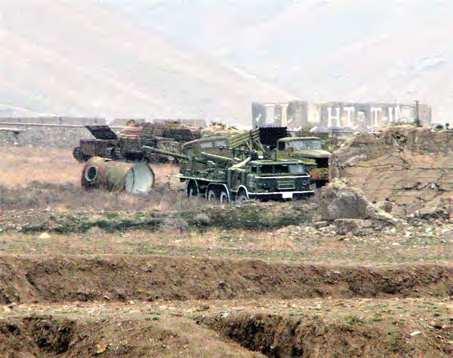
Very little of Afghanistan’s terrain is suited to mechanised warfare, which relies on unhindered manoeuvrability and superior firepower. There were also no railways and only 11,000 miles of roads, of which only one-sixth was paved. The national Afghan Army was largely unable — or disinclined — to take on the warlords, leading to the start of a ten-year Soviet occupation. Just four years into the conflict, ABC World News presenter Peter Jennings reported that “an unwinnable war drags on, unwinnable for either side”.
Jennings said that while the Afghan guerrillas had prevented a Soviet victory, they had not prevented Soviet domination. “There are slightly more than 100,000 Soviet troops in Afghanistan, which is about the size of Texas. US intelligence estimates it costs the Soviets about $3bn.
“Why, after four years, have the Soviets not done better? First, they miscalculated because they couldn't control the communist regime that took over in 1978, and then they miscalculated in 1979 because they thought that they could be in for six months and stabilise things and leave. What superpowers often do, they forget that the mere presence of foreign soldiers in other countries becomes the main issue.”
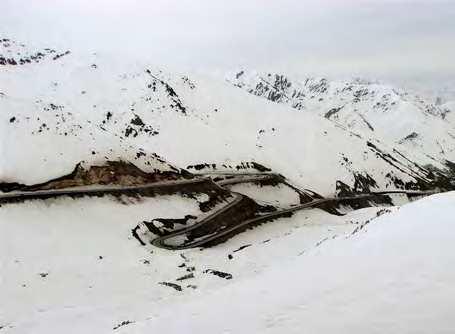
‘Arguably, the Soviet army’s main supply route was also its most vulnerable’
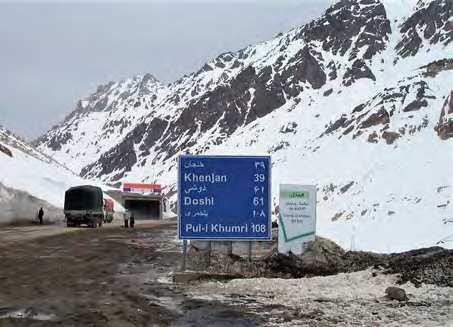
By 1984, the US Central Intelligence Agency (CIA) estimated that, since the invasion of Afghanistan in 1979, the Soviets had suffered roughly 25,000 casualties, including about 8,000 killed. They had lost more than 600 helicopters and fixedwing aircraft, and thousands of armoured vehicles and trucks. Casualties in the Afghan Army were around 67,000 and insurgent casualties at some 40,000.
In February 1987, at which time it was believed Soviet manpower and assets had peaked in the Afghan war, the CIA Directorate of Intelligence estimated Soviet military personnel strengths in Afghanistan at 120,000 — of which only 74,500 were combat troops — with as many as 40,000 full-time support staff in the Soviet Union.
Air support was provided by 115 Mig-21, MiG-23, Su-17 and SU-25 (the Soviets’ newest ground-attack aircraft) fighters and fighter bombers, and around 300 Mil M-6 and M-8 transport and Mil M-24 attack helicopters. On the ground, the Soviet forces need for tanks in Afghanistan was relatively small, and the opportunities for their use were limited.
While the Soviet ground forces arrived with more advanced armour, their Afghan army allies employed the 35-ton T-34/85, which first went into production in January 1944 at the Urals Tank Plant No 183. The T-34/85 was essentially a T-34 with a larger calibre turret gun, the latter described by German general Ludwig von Kleist in 1941 as the “best tank in the world”.
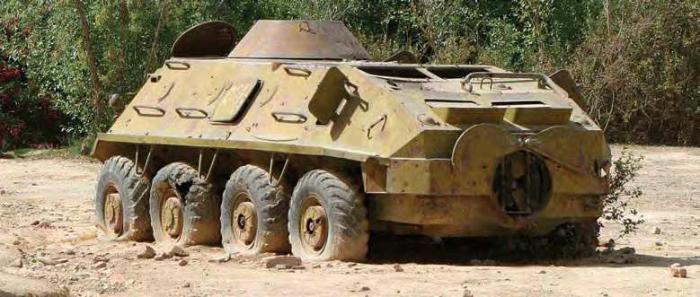
Arguably, the Soviet army’s main supply route was also its most vulnerable: the 300-mile long Salang Highway, linking Kabul with Khairaton, north of Mazar-i-Sharif. Three-quarters of the 40th Army’s supplies came along this route from the Soviet Union.
From the north, the highway enters the imposing Hindu Kush mountains, winding its way along the numerous switchbacks of the Salang Pass. It then passes through the claustrophobic, perilous, wet, and airstarved Salang Tunnel at 11,000ft Built by the Soviets in 1964, the 1.6-milelong tunnel was barely wide enough for two lanes of traffic, creating a major choke point. During the Soviet occupation, some eight million tons of military supplies passed through the tunnel.
Suffice to say, the whole Hindu Kush stretch of the highway provided the mujahideen with myriad positions from which to ambush Soviet convoys, some as long as 800 vehicles.
A typical action occurred along the Salang Pass on October 16, 1986, when mujahideen fighters attacked a mile-long column of tankers escorted by a Soviet BTR. Mortars disabled the amphibious APC and set several tankers ablaze. During the ten-year conflict, the Salang Highway became a graveyard of destroyed or abandoned Soviet armour.
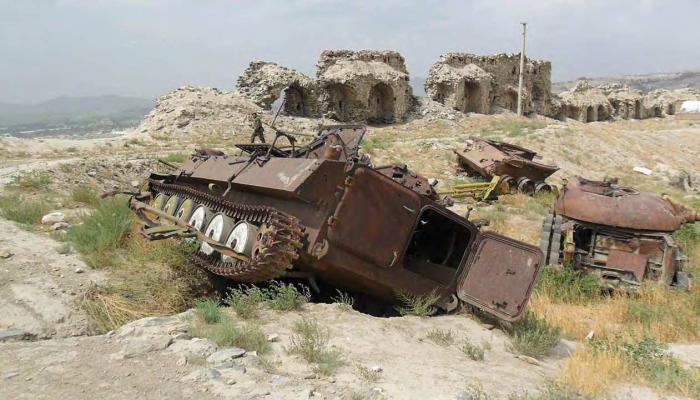
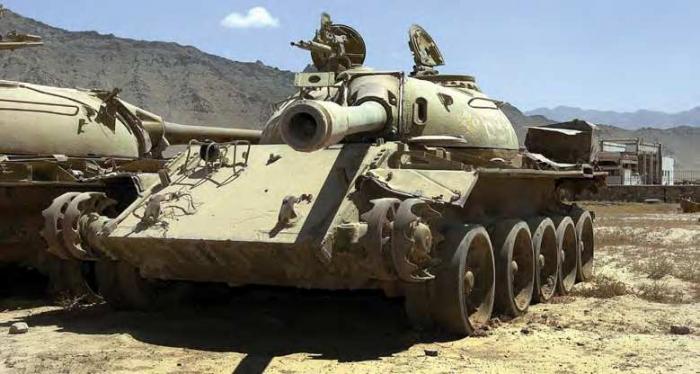
The Panjshir Valley, the mujahideen’s main supply route from Pakistan, proved as hazardous for Soviet armour. The 40th Army conducted nine major operations in the valley, more so than anywhere else in the country.
In one such offensive in April 1984, 11,000 Soviet and 2,600 Afghan troops, with 200 aircraft and 190 helicopters air support, penetrated the valley. In only one action during the operation, elements of the 682nd Motor Rifle Regiment suffered major casualties in an ambush. A Soviet private reported two BMPs loaded down with dead, their limbs sticking out from the piles. Such tragic scenarios characterised the Soviet occupation, as commanders failed to adopt tactics that would neutralise the mujahideen’s command of high ground.
Soviet troop morale dropped considerably over the years, leading to random war crimes against Afghan civilians. In one incident, four tanks escorting a tanker convoy that had been ambushed, opened heavy fire on a nearby village, destroying it completely.
From 1980-85, Soviet forces in Afghanistan lost 655 armoured vehicles and 340 tanks, and a staggering 5,250 tracks for armoured vehicles. Landmines, often stacked in threes, and remotely detonated explosive devices exacted a major toll on Soviet armour.
According to the same 1987 CIA report mentioned above, the Soviets deployed an estimated 40 T-54/55 and 690 T-62 main battle tanks (MBTs).
When the Soviets recaptured their Kharkiv factory in 1945, in addition to the production of the T-44 tank, the first prototypes of the T-54 were built. T-54 production was started in the Urals and Kharkiv in 1947–48, and in 1951 the KB-60M Design Bureau was established in Kharkiv.
Further development took place at Uralvagonzavod, and by the end of the 1950s, the Malyshev Plant commenced production of T-54 and T-55 medium tanks. With a maximum armour thickness of 8in, a 100mm gun and a crew of four, the T-54 had become the Soviet Union’s primary MBT after World War Two. An estimated 60,000 were produced. The T-55, a 1958 upgraded variant, was fitted with nuclear, biological, and chemical protection systems and a larger V12 diesel engine.
The T-62 MBT was the largest component of the Soviet’s tank arsenal in Afghanistan. Succeeding the T-55, the T-62 had a larger ‘mushroom dome’ turret to accommodate the 115mm, smoothbore 2A20 gun with its novel automatic shell extractor.
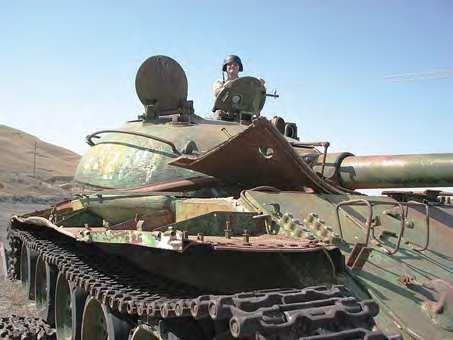

The interior accommodated a crew of four, in addition to stowage for 40 maingun rounds. First displayed to the public in Moscow in 1965, over the next ten years an estimated 20,000 T-62s were manufactured.
Large numbers of armoured personnel carriers (APCs) were employed in Afghanistan, principally for escort duty and perimeter patrol. To provide greater protection, the BTR-50 amphibious tracked and BTR-60 8x8, wheeled APCs were replaced with BTR-70s. The CIA estimate for APCs used by the Soviets was 10 BTR- 50s, 105 BTR-60s and 1,670 BTR-70s.
Weighing 16 tons, the flat, boat-shaped BTR-50 had a two-man crew and could carry 20 combat-ready infantry troops.
However, the 10-13mm, cold-rolled, welded-steel armour offered occupants limited protection from large shell shrapnel and .50-inch machine-gun fire.
The BTR-60, the first of the Soviet Union’s eight-wheeled APCs, first entered service with the Soviet Army in 1961. By 1976, when production stopped, around 25,000 had been manufactured.
The troop compartment accommodated 14 troops, and in the front, a crew of three. The 11-ton vehicle was fully amphibious.
Here too, its weakness was the 7-10mm, welded-steel armour.
First appearing in a parade in Moscow in 1980, the 12.5-ton BTR-70 had a crew of two and a reduced troop capacity of nine. Fully amphibious, this APC provided improved armour protection over its front arc, but the thickness of the steel remained the same as in previous models, and therefore relatively easily put out of action by the mujahideen.
In the mid-1960s, the Soviet Union revolutionised mechanised warfare with the introduction of the innovative BMP-1 infantry fighting vehicle (IFV). The 14.5-ton amphibious vehicle came equipped with a turret-mounted, 73mm, 2A28 Grom semiautomatic gun. Crewed by two to three men, it had a capacity for eight infantrymen sat back-toback. The BMP-1 was first battle-tested when used by Egyptian and Syrian forces against those of Israel during the 1973 Yom Kippur War. However, in the flat,desert battlefields of the Sinai, the vehicle was easy prey for Israeli tanks, anti-tank fire and strafing from the air.
‘Their weapons were compatible with the mobile tactics of guerrilla warfare and included the ubiquitous AK-47 assault rifle’
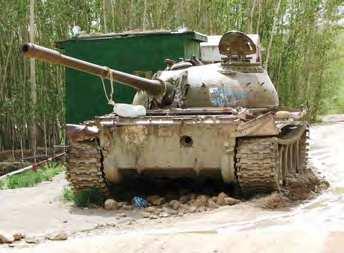
As a result, the improved BMP-2 was developed and introduced for service in 1980. This variant was fitted with the Shipunov 2A42 30mm automatic cannon. Better suited for convoy protection than the old BMP-1, the vehicle had a troop capacity of only seven.
By contrast, was the MT-LB multipurpose tracked vehicle, which was developed in the late 1960s. The Russian acronym, Mnogotselevoy tyagach legky bronirovanny, translates directly as ‘multipurpose towing vehicle light armoured’.
The versatile amphibious vehicle could transport ten troops with a three-man crew, in addition to being employed as a general cargo carrier. In terms of armament, this 11.5-ton vehicle was generally only fitted with a 7.62mm PKT machine gun.
By the late 1980s, there was mounting criticism of the Afghan war in the Soviet media and by the man in the street, likening the conflict to the disastrous Vietnam War Early in 1987, the demobilisation of Soviet conscripts in Afghanistan commenced.
This was followed by the 40th Army starting its official withdrawal in May 1988, and in February 1989, the last Soviet troops left.
On February 11, 1989, as the massive convoy of the Soviet Army Western Afghanistan Division trundled through the Afghan border town of Towraghondi and into the Soviet Union, armoured assault leader Lt Viktor Yevdokimov said to accompanying British journalist Arthur Kent: “We could have tried anything, and the outcome would have been the same.
It’s time to go home.”
And right now, 32 years later, we have witnessed the US and UK withdraw their troops from that eclectic amalgam of fiercely zealous tribes and warlord polities that the rest of the world calls Afghanistan.
